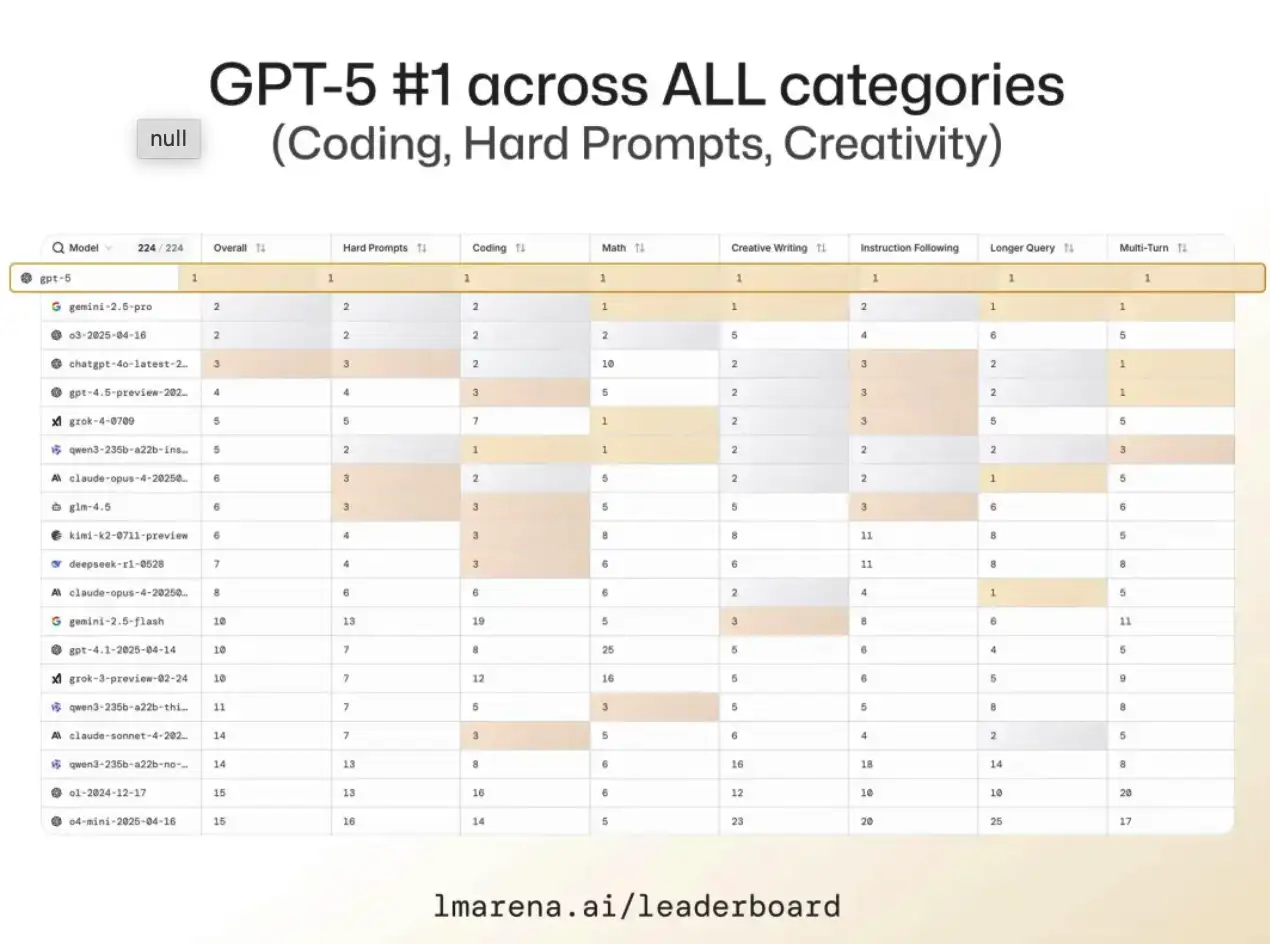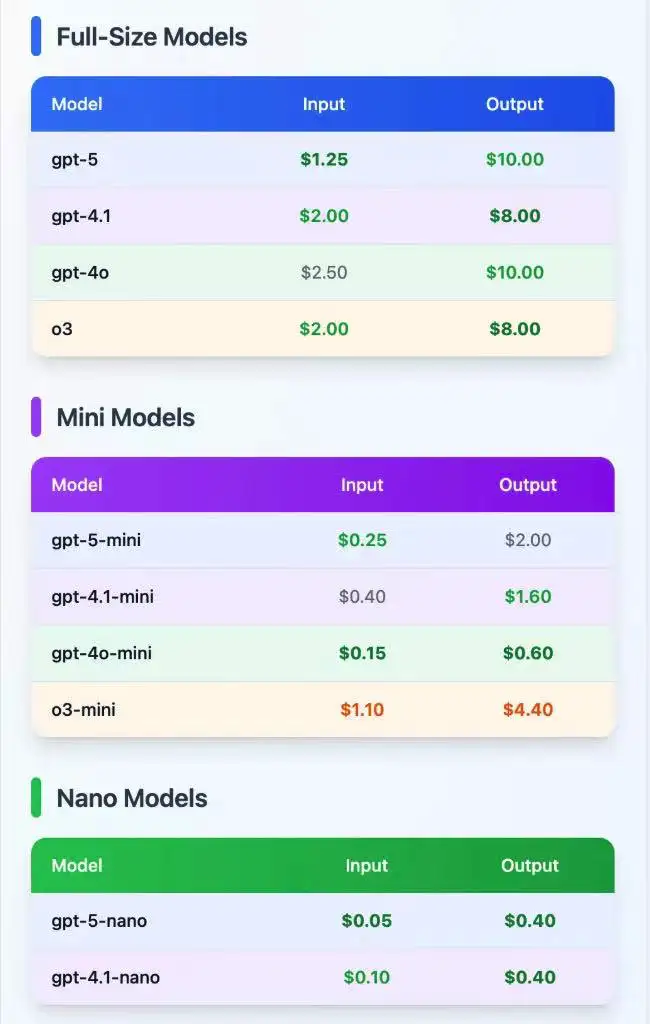GPT-5: Everything You Need to Know

Vivi Carter · 9, August 2025

1 AM, a Groundbreaking OpenAI Announcement
At 1:00 AM, OpenAI dropped what’s arguably the most powerful language model to date: GPT-5. The community had been eagerly meeting each new rumor, but now, there’s clarity. This overview will help you cut through the confusion and focus on what actually matters—whether you’re a general user, a developer, or just someone following the future of AI.
🚀 Fast Facts at a Glance
For ChatGPT Users
- Universal Access: GPT-5 is now open to everyone via ChatGPT.
- Plus Users: Get higher usage caps and can activate “Thinking Mode” for deeper responses.
- Pro Users: Unlimited access, including the high-performance GPT‑5 Pro model.
For API Users
- Easy Onboarding: Access the GPT-5 API as soon as you complete ID verification.
- Model Lineup: Four options—GPT-5, GPT-5-Mini, GPT-5-Nano, and GPT-5-Chat.
- Lower Price: GPT-5 sets a new bar by offering more for less, compared to its predecessor GPT-4.1.
Breaking Down the Model Family
If you’ve followed earlier coverage, you know the GPT-5 lineup looked messy at first. Here’s how OpenAI actually organized it:
| Context | Model Names |
|---|---|
| ChatGPT UI | GPT-5 Pro, GPT-5, GPT-5 Without Thinking, GPT-5 Mini |
| API | gpt-5, gpt-5-mini, gpt-5-nano, gpt-5-chat |
| Dev Docs | gpt-5-main, gpt-5-main-mini, gpt-5-thinking, gpt-5-thinking-mini, etc. |
But really? All you need is the API lineup:
- gpt-5: The flagbearer, updated through October 1, 2024.
- gpt-5-chat: Mirrors the main model but tuned for conversational use, updated through September 30, 2024.
- gpt-5-mini/nano: Lighter versions, updated through May 31, 2024, optimized for different performance and cost needs.
OpenAI has started providing regular model “leaderboards” and benchmarks for these variants, ensuring transparency.
Reference:See OpenAI’s documentation for up-to-date specs and benchmarks: OpenAI API Docs
Pricing: More for Less
Simply put: GPT-5 is not only smarter, but it’s also cheaper than GPT-4.1. This is a big deal—high-powered AI at a lower barrier is a hallmark of rapid progress.
Comparative pricing data shows OpenAI lowering costs even as capabilities increase. For a detailed breakdown and ongoing updates:
Additionally, competing models from China (e.g., GLM, Baichuan) are catching up quickly, but OpenAI’s cost-performance ratio remains strong (36Kr report).

Using GPT-5 in ChatGPT
By the time you read this, GPT-5 should be live platform-wide. Older models like GPT-4.0 and o3 are being retired from the main interface:
- Free Users: Can try GPT-5, but with strict usage caps. Once reached, you’re moved to GPT-5 mini.
- Plus Users: More generous usage, and access to unique workflows, including GPT-5 integrations for code (Codex CLI, for example).
- Pro Users: Unlimited access, including GPT-5 Pro.
- Enterprise & Education: Access rolling out within a week.
The interface itself has received an overhaul to highlight these options.
Using GPT-5 via API
API access is how developers and advanced users will unlock GPT-5’s full capabilities:
- Input Flexibility: Accepts both text and images, outputs text.
- Powerful Endpoints:
/chat,/responses,/assistants, with streaming, function calling, structured outputs, and fine-tuning.
- Tools Integration: Now supports custom tools and a new
allowed_toolsparameter—you can specify which tools models can actually use (see: Function Calling Docs).
Verbosity Controls
Fine-tune the “wordiness” or detail of GPT-5’s output through the verbosity parameter (high, medium, or low). For instance, developers can choose minimalist code or more elaborate explanations, boosting productivity.
Example (Python API):
from openai import OpenAI
client = OpenAI()
response = client.responses.create(
model="gpt-5",
input="What is the answer to the ultimate question of life, the universe, and everything?",
text={ "verbosity": "low" }
)
print(response)
Verification Required
All API access to GPT-5 requires real-name verification—this is part of OpenAI’s push toward greater trust and responsibility. Users must verify their identity, which usually means a US ID, before using the API (OpenAI Organization Settings).
What Does GPT-5 Do Better?
Several real-world coding scenarios highlight where GPT-5 shines, especially in code generation, web app prototyping, and generative artistry:
- Interactive Whiteboards: Instantly create single-page drawing apps with features like erasing and saving.
- Solar System Simulations: Build interactive models to visualize orbital mechanics, with real-time drag-and-drop.
- 2D Games: Develop turn-key space battle games fully scaffolded in frameworks like Next.js.
- Generative Artwork: Produce calming, animated scenes (e.g., drifting clouds, airplane flyovers) with a single prompt.
Feedback from the developer and AI creator community underscores a noticeable leap in performance, code quality, and generated artistry (Hacker News discussion).
Behind the Launch: Rough Edges
No major launch is perfectly smooth. GPT-5’s rollout included misreported benchmarks, leaderboard bugs, and a naming muddle—reminders of just how fast this space is moving.
- Benchmark Confusion: Early scores posted for SWE and Frontier Math were inaccurate. Corrected details are now reflected in the docs.
- Rapid Fixes: OpenAI responded quickly; user trust remains high due to this transparency.
Final Thoughts
GPT-5 is more than an incremental upgrade—it’s a gateway to richer applications and broader access. Expect UI changes, cheaper API usage, enhanced capabilities, and an ever-expanding community of both creators and businesses leveraging the model.
If you’re part of the 20-50 crowd following AI’s progress, GPT-5 isn’t just hype—it’s another real leap forward, lowering the walls between us and smarter, more productive digital tools.
